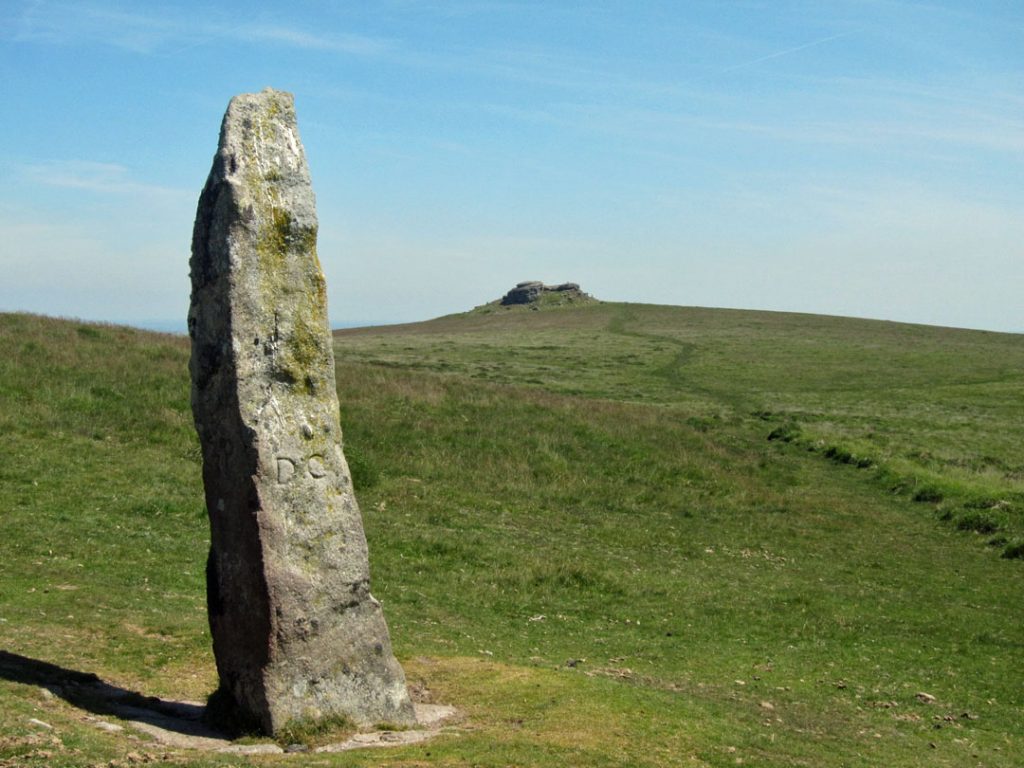The first people to visit Dartmoor would have been groups of hunter gatherers who no doubt roamed over large areas following their nomadic life. Flint tools and arrow heads dating back from the Mesolithic age (approx. 9000 – 4000BC) have been found on Gidleigh common, very close to land now part of Chagford parish.
Occupation
On many parts of Chagford Common, as with so much of the edges of the open moor, there’s a huge wealth of visible evidence of activity and occupation dating back to the late Neolithic and Bronze Age. Not far from Kestor, in all directions, there are the obvious remains of circular dwellings and field boundaries, evidence of occupation and farming from over 3000 years ago.
The fields would have been used for growing crops and corralling livestock, with abundant grazing on land beyond the enclosures. While only the granite walls of the circular dwellings (known now as hut circles or round houses) remain, many are in a remarkable state of preservation, with even doorways still intact in some cases. It is easy to imagine the construction of these houses, with their thick granite walls surmounted with a circular turf or thatched roof, supported on a series of posts set into the ground.
There are a few examples – elsewhere on Dartmoor – of accurate and beautiful reconstructions. The extensive field boundaries and land divisions suggest an intensively farmed and managed landscape which must have supported many families.
From the Iron Age (from about 800 BC) there is much less evidence of occupation and it is thought that with a worsening climate permanent settlement became unviable and people retreated to lower-lying lands. But it’s almost certain that the Dartmoor hills continued to provide extensive grazing for cattle and sheep, developing the tradition of transhumance that became a key feature of Dartmoor in the middle ages.
Ritual monuments
As well as evidence of domestic life and farming, Chagford Common has some fine examples of ritual monuments, such as can be seen in many other locations on Dartmoor. It is impossible to know with any certainty of the original purpose of these structures and indeed their use may have changed over time. Their mysterious presence contributes to the allure of Dartmoor and they are certainly a powerful invitation for speculation. Now acting as a boundary between Chagford and Gidleigh parishes, and clearly visible from Kestor Rock, is the Long Stone, one of the twelve still upright Dartmoor standing stones and the 4th highest, over three metres above ground.


Just over the brow of the hill above the Long Stone are the remains of two double stone rows. At the southern section of Chagford Common is the particularly striking double stone row at Hurston Ridge, with its 99 stones set in two parallel lines, marking a straight line just shy of north. The row is cut through by later (but still very ancient) field boundaries and the remains of a settlement are close by. Nearby is a low mound, a cairn originally excavated in 1900. Now a modest presence on the landscape, excavation revealed that the cairn was a carefully constructed burial site, complete with a funerary urn, which probably once contained ashes following a cremation.




